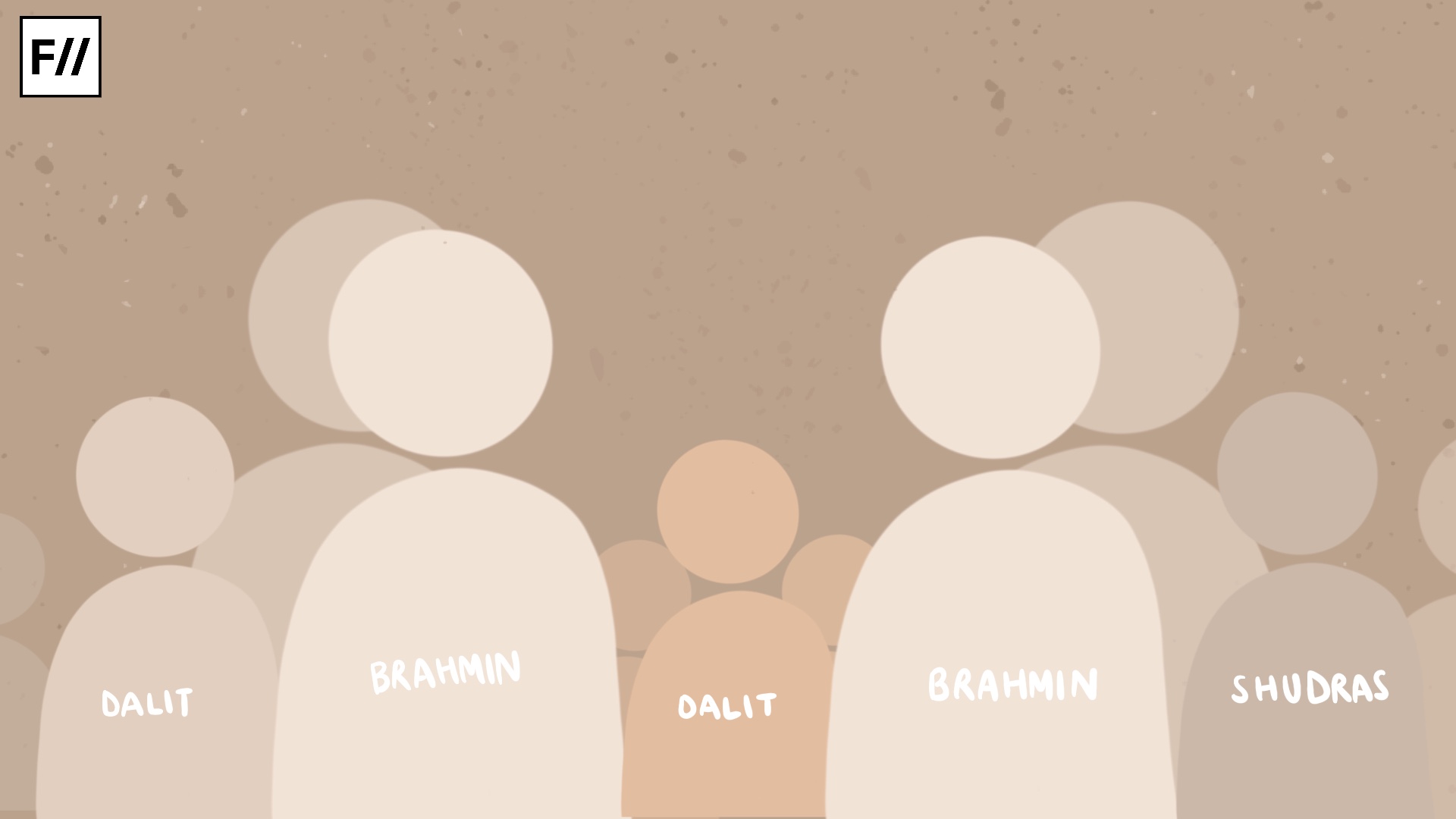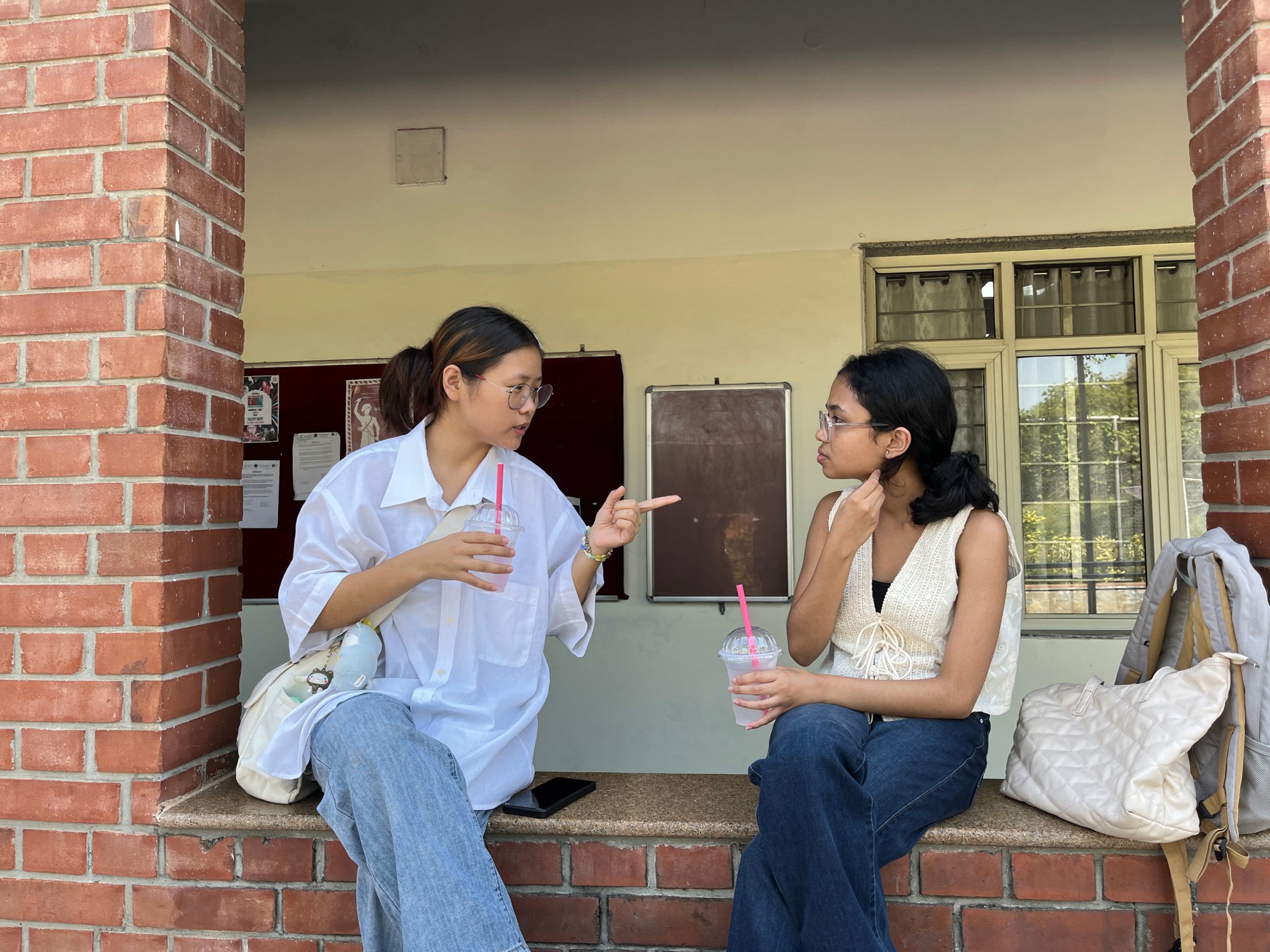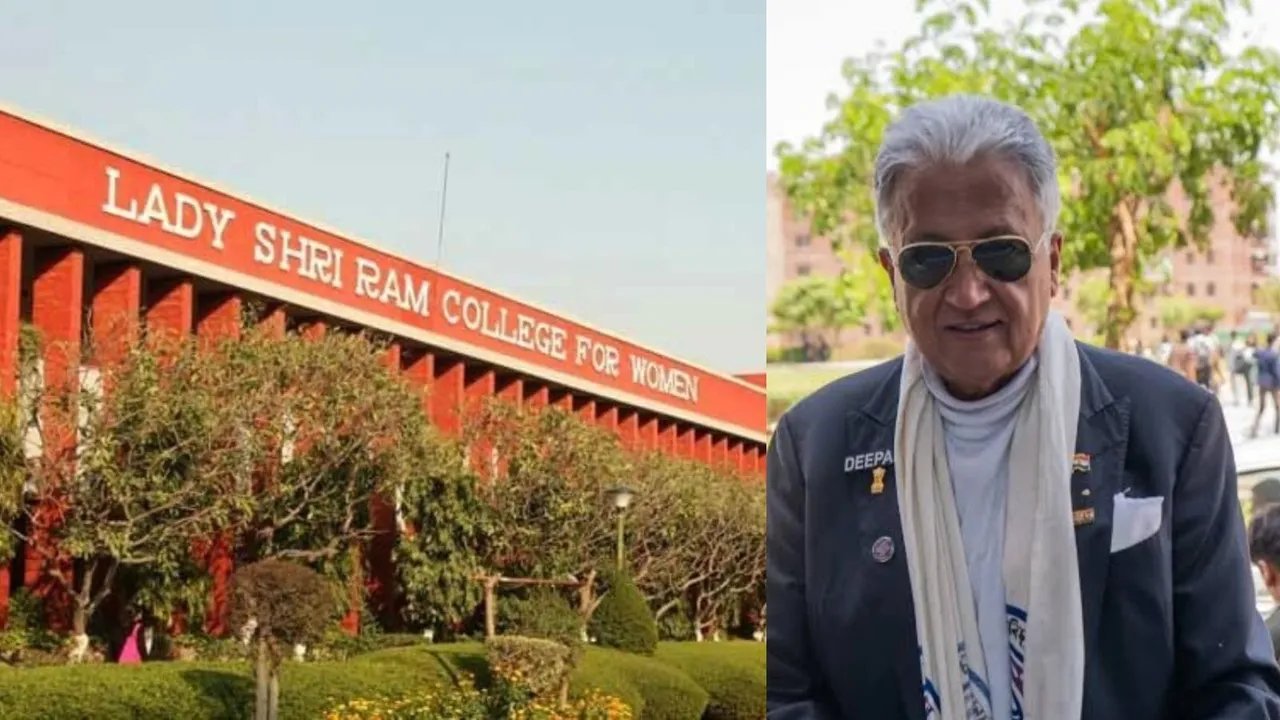Life at an IIT is a mixture of early-morning lectures, quizzes, deadlines upon deadlines, and late-night food detours. It’s demanding, but in a good way. And getting into an IIT is sometimes seen as some equaliser: once you’re in, only hard work and dedication matter. But this isn’t completely true. On campus, various aspects of a person’s identity shape their experience. And one of the most prominent ones to stand out is gender. Considering the gender ratio at IITs even today, how women navigate this space is significantly shaped by their gender. Numbers are only half the story. To understand how and whether women navigate spaces differently, it is essential to look at their experiences in different scenarios, in both academic and non-academic spaces.
Learning and Collaboration in Classrooms and Labs
A considerable part of undergraduate college life is, of course, academics. This includes classes, quizzes, assignments, and any other materials professors choose to send to students. At an institute with such a skewed gender ratio, does this difference in numbers affect the way female students feel in class? Some of them say yes. “I’m not comfortable sitting anywhere in a class, I prefer to sit where there are more girls,” says a third-year mechanical engineering student, “Most girls tend to sit in one part of the classroom.” In terms of class participation, many agree that there is no bias. Professors ask everyone to answer questions in class. However, a few male students say that it may not be very easy for a girl to discuss and interact with fellow students in class if they aren’t comfortable in male-dominated groups. “Some perspectives don’t get shared as often,” says Aditya, a fifth-year dual-degree student from the biotechnology department.
Labs are a wholly different ballgame altogether. The students are divided into groups of ten, and most groups have only 1-2 girls. One student says, “It’s weird being in a lab group with guys. I have to approach them because they have their own in-group, and I can’t mingle with them.” Once, her friend was the only girl in her group and was unsure whom to discuss the project with. A final-year chemical engineering student, Grisha, notes that although both men and women work in the lab, women tend to take down the readings and participate less actively. Though this is not very prominent, it still exists. She adds, “I’ve not had an experience where a guy in my lab group has taken the initiative to write the report. Girls have to push them for the report.”
Dealing with Misogynistic Misconceptions in Institute Life
‘She got in because she’s a girl’ is a constant refrain used in many contexts. From their very admission into the institute, girls also hear this in the placement and internship scenario, where the major credit for a female student landing a job or an internship is attributed to her gender. There are a lot of notions around who companies hire and why, with a lot of people chalking up a female student’s offer to her being pretty and her “face value”. Bring in the factor of CGPA, and it is common for others to comment, “If you’re a girl with such a high CG, you’ll obviously get an internship.” “I’m a girl first, and then I have a good CGPA,” says one student.
One student notes that the institute’s central issue is the higher number of male students compared to female students. The difference in the ratio of female versus male students in the institute and the ratio in the offer list of a few companies suggests that females are more preferred. Siddartha, a recent alumnus from the chemical engineering department, says, “I have heard many people say things like tu toh ladki hai, tera hojayega to female students.” He adds that, aside from diversity hiring, a few core companies also have an inverse bias. They do not prefer to hire female students because the position is not considered a desk job. It is high-intensity work, and employees have to go to the plant regularly.
Everyday Spaces: Hostels, Elections, and DJ Nights
In her course ‘Women in India: Problems and Prospects’ at IIT Madras, Associate Professor Kalpana K encourages students to reflect on their campus experiences. Using a paper on Gender in Higher Educational Research Institutions in Science and Engineering, she opens up a discussion first on the experience of women faculty, segueing into the experiences of female students on campus. She says, “I get them to reflect on hostels, dormitories, classrooms, laboratories, library, public spaces, evening time, morning time, etc. They share these very, very interesting stories in the class with everybody.” She discusses the gendered perspective on women’s performance, a topic this article previously addressed in the context of placements. In Prof. Kalpana’s class, students discuss how a female student excelling in a course may be perceived as her trying to charm the faculty, and how the faculty are thus more lenient with females, despite their performance being just as good as or even better than that of their peers.
Students in this course also bring up the institute elections. Any candidate going through elections has to suffer social media trolls, but people try to pull women down by doing a character assassination of them. Ridhima Mittal, a second-year student at the metallurgical and materials engineering department, agrees. There is a lot more prejudice towards female candidates who are standing. She also brings up how elections take place in Swarnamukhi, the girls’ hostel for undergraduate freshers. Senior male students are constantly hovering over the candidates; “They have no reason to be so involved in a freshie girls’ hostel election,” she says.
How do women feel taking part in these events, especially those in crowded spaces? One student says, “If you’re a girl, and even if you come a little late, you have no space to walk. You need to have a couple of guys who you’re comfortable with around you.”
Besides the academic grind of going to classes, submitting assignments, and writing exams, insti life is also about PoRs (positions of responsibilities). When asked about the gender ratio here, almost all students agreed that there’s an imbalance in the more technical clubs, the competition teams, and the placement cell. Students reported no noticeable difference in other clubs and teams. A significant aspect of institute life is the events and fests organised by various teams. There are many concerts and other cultural and religious celebrations that culminate in DJ nights.
How do women feel taking part in these events, especially those in crowded spaces? One student says, “If you’re a girl, and even if you come a little late, you have no space to walk. You need to have a couple of guys who you’re comfortable with around you.” Girls have to constantly adjust and readjust their circles because people keep pushing them from different directions. However, Siddartha says it may not necessarily be due to gender. He says, “People don’t respect another person’s space because then they can’t enjoy. As an introvert, I too feel uncomfortable in such a setting.” This overlooks the gendered nature in which public spaces function, excluding women from participating in sometimes small, invisible ways.
Institutional and Student Support Systems
To understand and help with the grievances of female students, IIT Madras’s student wellness team Saathi has a new Women’s Representative vertical. This vertical aims to bridge the gap between students who want to raise sexual harassment complaints and the body that handles such complaints, CCASH (Complaints Committee Against Sexual Harassment). While this is the primary goal, the student vertical also aims to help with systemic issues and other concerns for female students, like “leadership, confidence, control by parents and dominance by male counterparts in PoRs“, says the vertical head, a fourth-year student from the Humanities and Social Sciences department. Regarding IITM’s policies, Prof Kalpana says there is no moral policing, especially based on gender. She says, “Administratively, I think generally the idea that, you know, safety of women and girls on the campus is paramount is generally kind of well-established here. I won’t fault the admin on that ground here. And I’m happy that they don’t do overt moral policing.”
Addressing the dress code (or lack thereof), she says, “Go to any college, government, private, anything across Tamil Nadu, where would a faculty member show up in class wearing a skirt? So, yeah, I can be a serious thinker, a scholar, and an excellent teacher. At the same time, I can be somebody who wears a skirt and a t-shirt that I like.” And it is hard to find many colleges in which no one would bat an eye if this happened. Students don’t have a curfew, unlike many private colleges, which enforce a curfew and an earlier one for female students. Here, they take responsibility for how they manage their day. IIT Madras also has a Women’s Forum, which includes faculty, staff, postgraduate, and undergraduate students. Their goal is to develop a strong forum of women and play a crucial role in the holistic development of all women in IIT Madras.
“It’s more about how if you’re a guy, you don’t have to think of all these things. The guys don’t remember they are guys all the time. But as girls in a male-dominated field, we have to remember our gender and we have to protect ourselves.”
Gender is only one part of a student’s identity that shapes their campus life. All students agree that other aspects definitely affect how a person perceives or is perceived by their peers. Be it economic class, caste, or queer identity, it does have an impact on how they navigate this institute. Aditya says that class and caste bias exist in the institute. “A lot of people will say it’s not, and maybe it doesn’t come out in hard biases, but it’s subtle.” This discrimination is more veiled and sometimes is done behind a person’s back. Class identity also affects how friend groups are formed. “Friendships tend to form among the same economic class,” says one student. Another adds, “Somehow, even if you don’t try, that’s how groups are formed.” Discrimination against students from the LGBTQIA+ community tends to be more open. “A lot of people on campus have trouble understanding queerness, and they don’t know how to approach people and have a conversation. Prejudice gets created, and it comes out in an unhealthy way,” one argues. The word gay is casually used as an insult to call something lame or stupid, and some people are visibly uncomfortable around discussions of being LGBTQIA+.
In conclusion, there is a constant, underlying reminder of a woman’s gender as she takes part in a public space like an IIT. To quote one of the interviewees, “It’s more about how if you’re a guy, you don’t have to think of all these things. The guys don’t remember they are guys all the time. But as girls in a male-dominated field, we have to remember our gender and we have to protect ourselves.”
About the author(s)
Samhita is a final year student of English Studies at IIT Madras. She enjoys reading, and especially loves engaging with women's fiction, as part of her academic research as well. She's a huge fan of sudokus, crosswords, and all sorts of puzzles.





